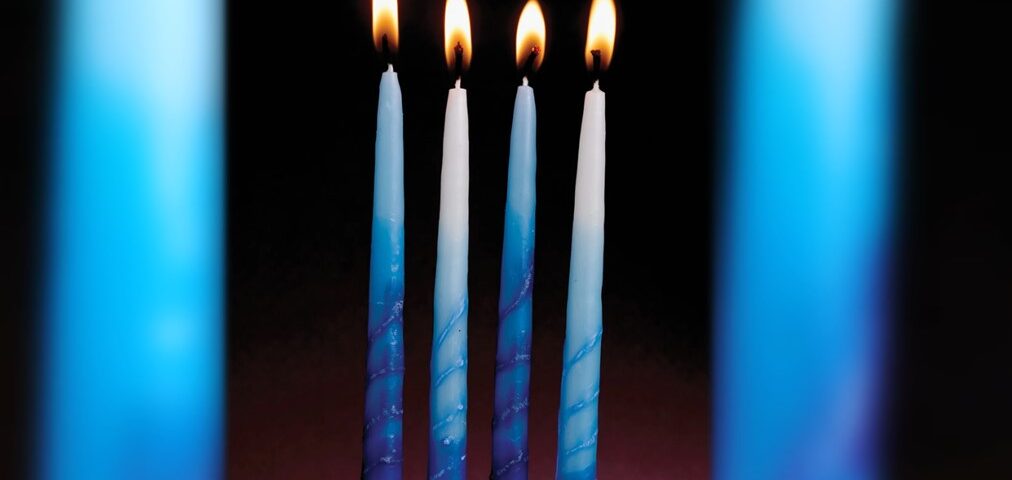TRADITION QUESTIONS: Hanukka Blues

Click here to read about this series.
What is it?
What is the color of Hanukka? Most American Jews would answer blue and white (some might add some silver trim.) Why does a holiday need a color scheme? Does any other Jewish holiday have a color?
Many have noted that American capitalism has transformed Hanukka. In her book Hanukkah in America (NYU Press, 2013), Dianne Ashton provides a curious detail in this transformation, explaining that the Hallmark Company invented Hanukka colors in the 1950s to diversify its holiday card offerings and entice Jewish customers into the card-sending habit. To make these products easily visible to American supermarket shoppers, they needed a distinct color scheme. But, why did they choose blue and white?
Blue and white were the colors of the then newly founded State of Israel, which redefined American Jewry on many levels. Yet, this trivial change to holiday décor speaks not just to the evolution of Judaism within a modern consumer society, but also to Israel’s role in shaping that change. The heroism of the Maccabees and their call to religious freedom as understood by American society was refracted through the prism of modern Israel.
Why does it matter?
Hanukka experienced a distinctive transformation from a minor festival to a major Jewish cultural touchstone, offering American Jews a competitor to the dominant winter holiday. Yet, as with Christmas, it was consumerism that drove this change. Social norms define community. Material things like color can become boundary markers for what is inside and outside that community. Even greeting cards contain red flags (or blue and white dreidels, as it were).
Rabbeinu Tam observes that the color of shoes worn in Talmudic times was black, but the laces were white (Tosafot Bava Kamma 59b). He explains the significance of this small sartorial detail by saying that during a time of persecution, a Jew would be required to sacrifice his or her life rather than change the color of one’s shoelaces (see Sanhedrin 74b). We do not know what social and cultural forces determined that Talmudic laces be white and shoes black. What does it mean for the color of a religious holiday to be determined by corporate marketers?
What questions remain?
What other corporate decisions and market forces are driving religious culture and social change?
How much of American Jewish cultural identity is tied to Israel and Zionism in subtle ways like Hanukka blue?
What does it mean to a religious society to be manipulated by corporate forces that it cannot see?
Chaim Strauchler, an associate editor of TRADITION, is rabbi of Cong. Rinat Yisrael in Teaneck.

